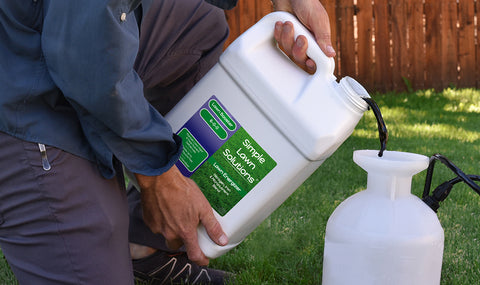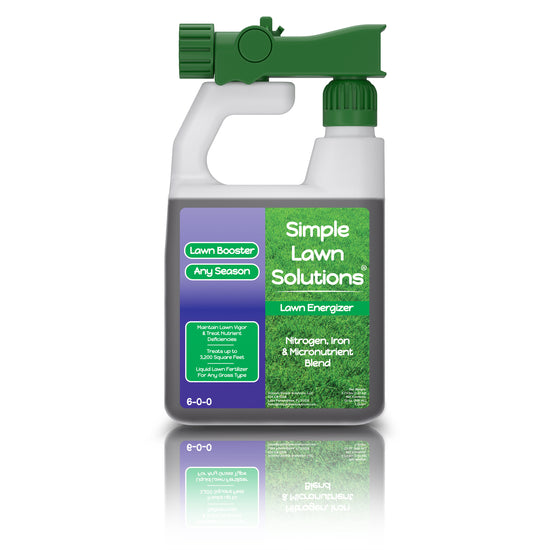In order to maintain a healthy lawn, it is necessary to ensure that your grass has all the essential nutrients it needs. One of those nutrients is sulfur (S), and an S deficiency can lead to a host of problems for your lawn. In this article, we will discuss some possible reasons for S deficiencies in lawns and how to correct an S-deficient lawn. Let’s first start out by answering what exactly it is that S does for your grass.

Sulfur is a constituent of certain amino acids and is therefore a constituent of protein. If S becomes deficient, the level of S-containing amino acids in the plant will drop, which will ultimately inhibit the synthesis of essential plant proteins. Sulfur also plays a role in many coenzymes and secondary plant products or as a functional group with direct involvement in metabolic reactions. If S is low plant metabolism and protein synthesis will suffer.
In recent years, S deficiencies have become increasingly more common. This can be attributed to less atmospheric S deposition, due to reductions in power plant S emissions, and increased use of fertilizers containing little or no S. This can be compounded further if you remove your clippings when you mow, removing a source of S that could be recycled in your soil.

When fertilizer S is not available, the main source of S in the soil will come from the mineralization of soil organic matter. This is the process of organic S being mineralized to sulfate-S. Soil organic matter is a large source of plant-available S, so soils low in S will generally be low in organic matter. Additionally, coarse-textured soils that are well drained and subject to leaching will also typically be lower in S.
Mineralization of S is a process carried out by soil microorganisms. Conditions which favor increased activity of microorganisms, like increased soil temperature and moisture, will result in the greatest amount of organic S being made available to your lawn. Colder soils will have reduced microbial activity, meaning that sulfur deficiencies will be most likely to occur during the spring months, on soils with low organic matter.
Sulfate-S carries a net negative charge and is relatively mobile in many soils. Sulfate-S does have the ability to bind to iron and aluminum in the soil, but iron and aluminum will favor binding to phosphate over sulfate. This means that sulfate-S can be easily leached from soils, especially coarse-textured soils.

Correcting S deficiencies can be done using a variety of materials. Ammonium sulfate, ammonium thiosulfate, elemental S, gypsum, potassium sulfate, and potassium thiosulfate are all sources of S that can be applied to help combat S deficiency. Simple Lawn Solutions 0-0-25 contains potassium thiosulfate and is a good source of potassium and sulfur for your lawn. Simple Lawn Solutions Lawn Energizer also contains 2.75% sulfur to help fight against a sulfur deficient lawn.

Whether your lawn is S deficient or you're just looking to increase the health and vigor of your grass, we have the solutions necessary to make you the envy of the neighborhood. Contact us today for a personal lawn plan or take our quiz to narrow down some products that will best help you in your specific situation.









